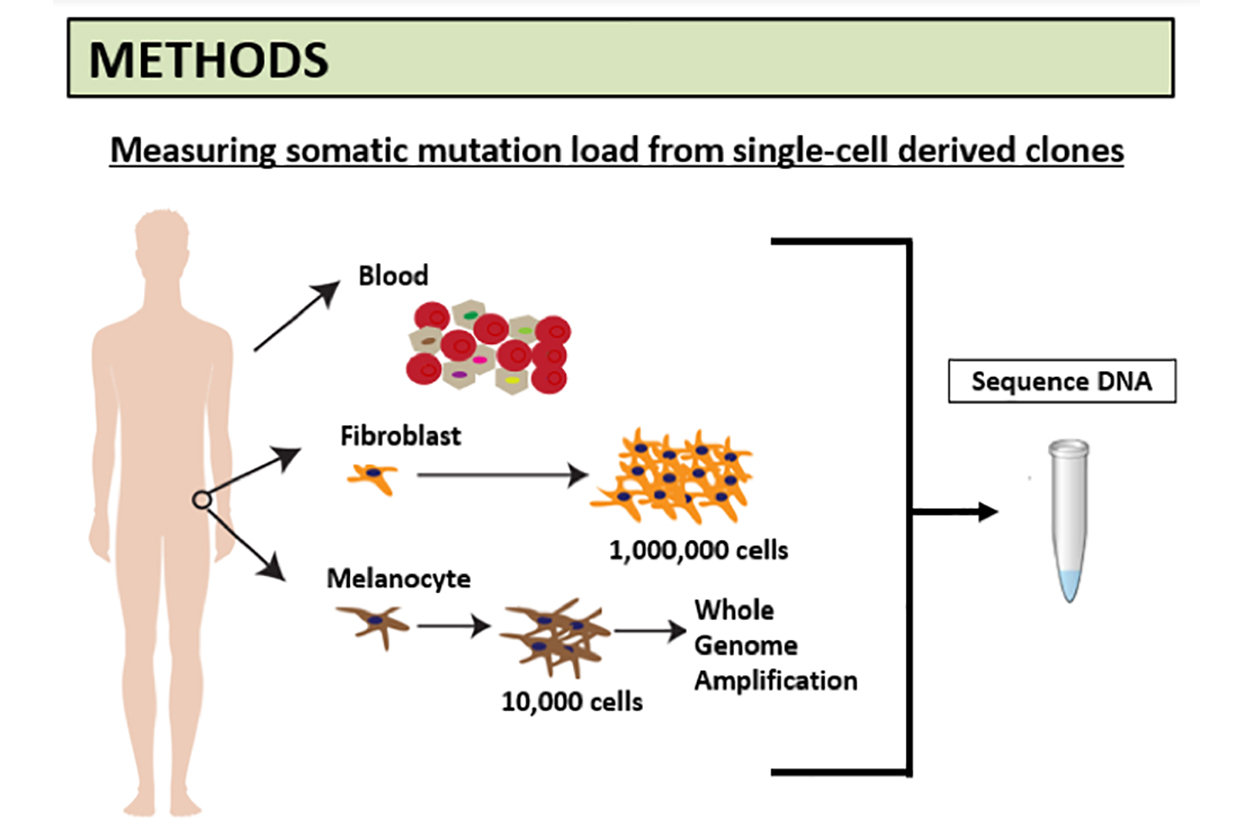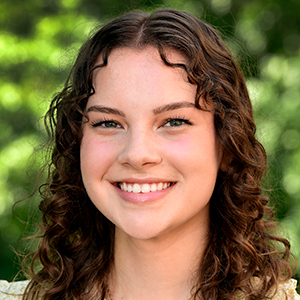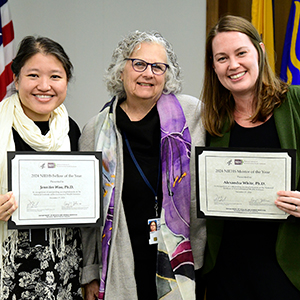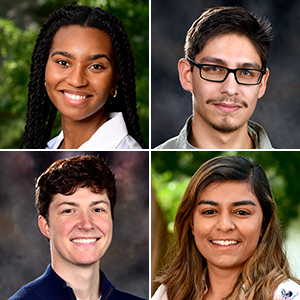Every year, postbaccalaureate fellows (postbacs) from across the National Institutes of Health (NIH) flock to Bethesda, Maryland, to present their research projects at the NIH Postbac Poster Day. This year, in response to the coronavirus outbreak, the face-to-face event was reorganized and more than 800 postbacs congregated online April 30 to share their findings.
Jacob Gordon, from the Nucleolar Integrity Group, won an Outstanding Poster Award at the event. This honor is bestowed on postbacs whose presentations score in the top 20%.
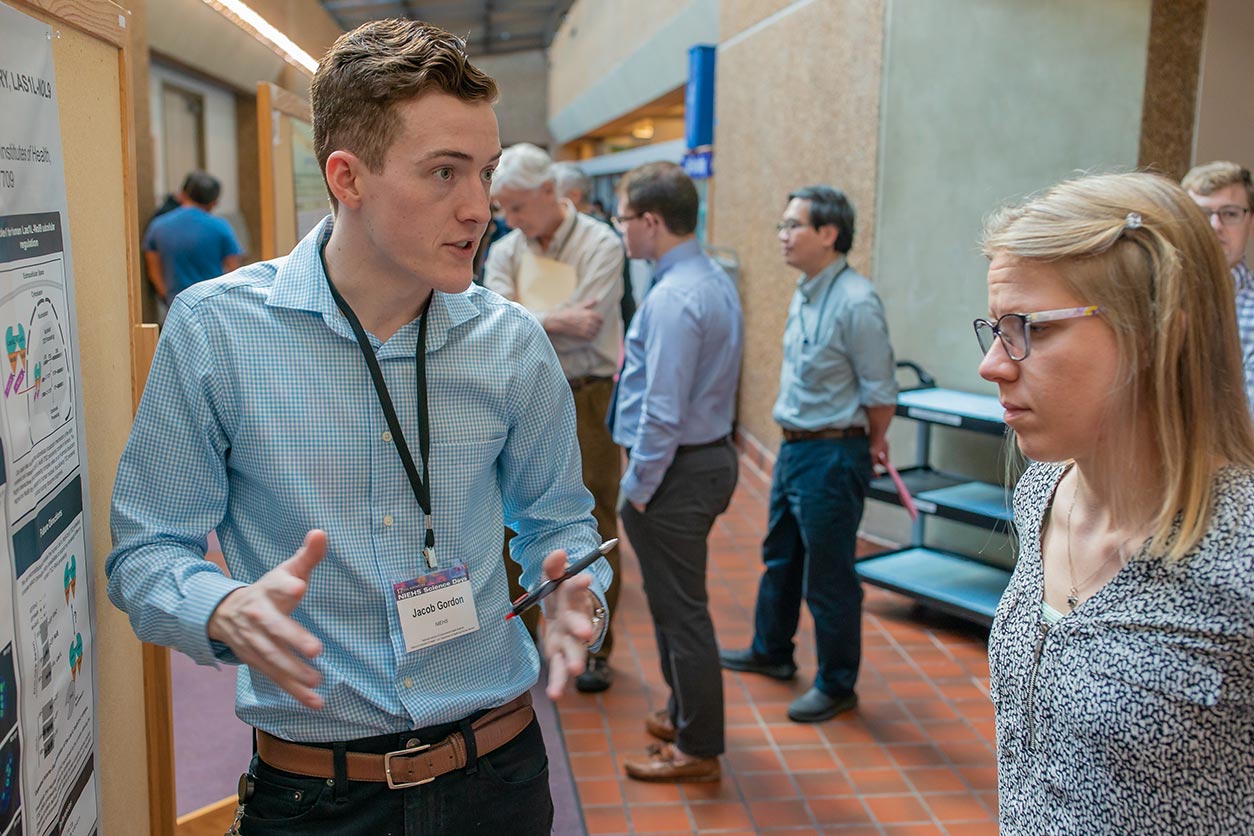 Gordon, shown above at the 2019 NIEHS Science Days, at which he won the Outstanding Poster Award, will begin the NIH Oxford-Cambridge Scholars Program this fall to pursue his Ph.D. (Photo courtesy of Steve McCaw)
Gordon, shown above at the 2019 NIEHS Science Days, at which he won the Outstanding Poster Award, will begin the NIH Oxford-Cambridge Scholars Program this fall to pursue his Ph.D. (Photo courtesy of Steve McCaw)Exercise in effective communication
“Postbac Poster Day is a great opportunity to showcase NIEHS participants’ amazing research efforts,” said Katy Hamilton, who oversees the institute’s postbac program. “This year, fellows were challenged to learn new technology and present their work succinctly.”
A panel of judges — graduate students, postdocs, and NIH scientific staff — reviewed each presentation. The judges scored poster content and appearance, and the clarity, conciseness, and accuracy of the presentation. Postbacs were allowed five minutes to present, followed by a five-minute question and answer session.
Seventeen NIEHS postbacs took on the challenge of presenting virtual posters. “It was a really good way to bring all of the work that my lab has been doing on this project together and think of it in context,” said Sanya Mehta, from the Matrix Biology Group. “It was really, really helpful for me in terms of understanding my research, [but] it was challenging for the virtual presentation because we were limited to five minutes,” she added. Mehta studies the interactions of innate immunity with the lung microbiome. She plans to apply to graduate school this fall.
New format requires adaptation
This five-minute time limit was a departure from a traditional poster session where presenters have more informal, one-on-one conversations with people who visit the poster. “I really stripped my poster down in terms of words and data … compared to what would have been hanging up at an in-person session,” Gordon said.
Several participants commented that preparing for the Virtual Poster Day felt much more like preparing for a short seminar. “This felt like a strange hybrid of a poster, which is not really the full scope of your project, but delivered in the style of a short seminar presentation,” said Camille Giacobone, from the Mechanisms of Genome Dynamics Group.
Flexibility during uncertain times
Virtual Postbac Poster Day tested our community’s resilience and flexibility, in addition to communication skills. NIH implemented the work from home policy a little more than a month before the event’s scheduled date. In that short period, the NIH Office of Intramural Training and Education (OITE) reorganized the event from one day in person to three days of online sessions.
“I was surprised by OITE’s response and how fast they were able to corral this massive group of postbacs into [something] that had practice sessions and IT support,” said Giacobone. “I was really impressed with how smoothly it went and also with all the resources provided [to us].”
The pace at which NIH staff and postbac presenters adapted to sudden changes was remarkable, but not everything was perfect. Giacobone experienced technical difficulties with audio during her presentation.
Mehta said of the virtual experience, “It’s an adjustment, and I would say not ideal compared to being able to share ideas back and forth in person.”
On the plus side, holding the event via WebEx allowed NIEHS colleagues, friends, and family to visit posters in a way that would not have been possible were the event held in person. Additionally, it was easier for NIH researchers to interact with a larger number of posters because the event was spread out over several days.
Though Poster Day looked a little different this year, its mission remained the same: to provide a high quality, rigorous training opportunity to NIH postbacs, reminding us all we are part of a larger scientific community.
(Victoria Placentra is a postbaccalaureate fellow in the NIEHS Mutagenesis and DNA Repair Regulation Group.)





